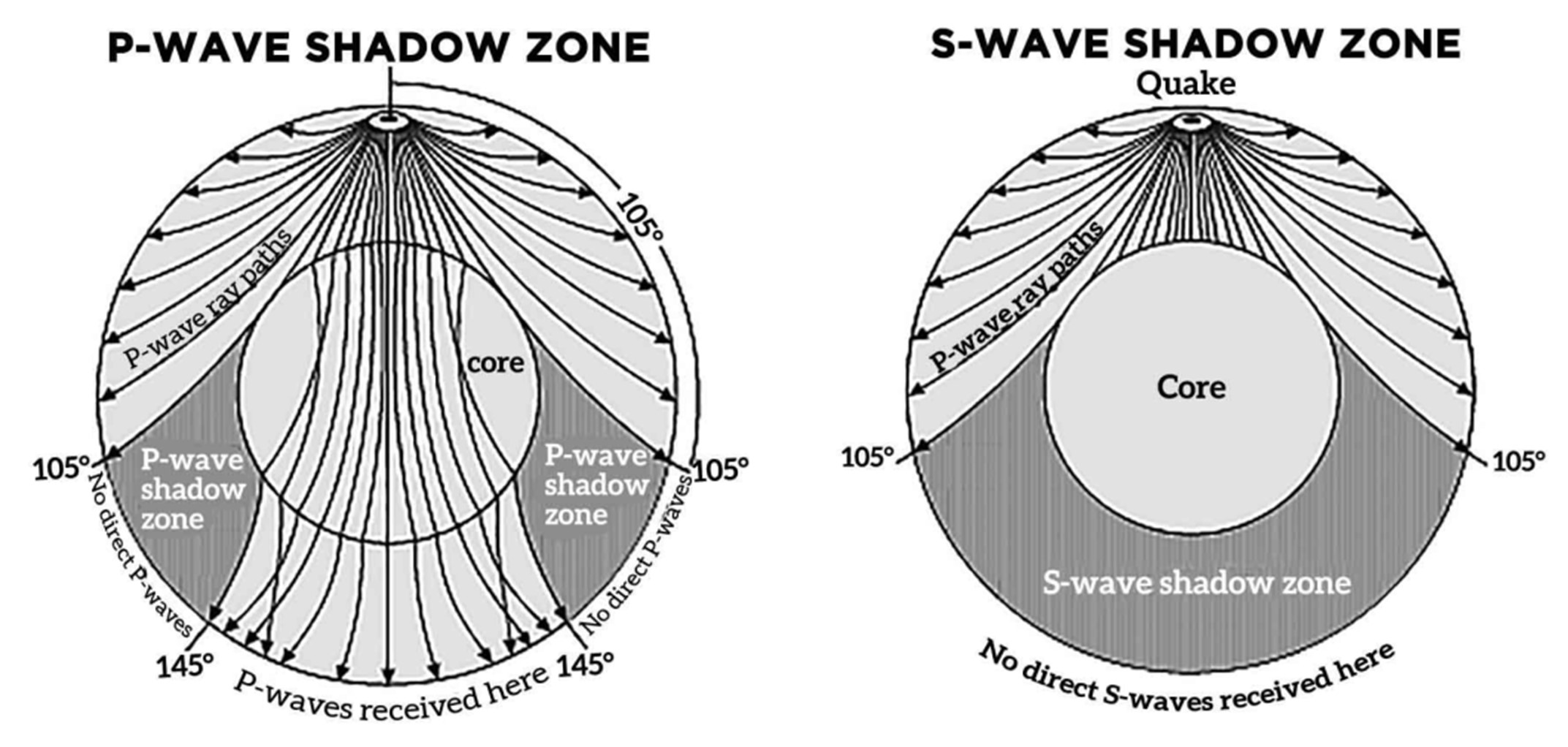-
Q. How do seismic shadow zones provide evidence for the existence of Earth's core? (150 Words)
19 Feb, 2024 GS Paper 1 GeographyApproach
- Write a Brief Introduction about the Seismic Shadow Zone.
- Mention about the seismic waves and shadow zones.
- Write how a seismic shadow zone provides evidence about the existence of a core.
- Write a conclusion.
Introduction
The existence of seismic shadow zones is primarily attributed to the refraction and reflection of seismic waves as they propagate through the Earth's interior. When an earthquake occurs, seismic waves are generated and travel in all directions through the Earth's layers, including the crust, mantle, and core. However, the density and composition of these layers cause seismic waves to undergo various changes in speed and direction, leading to the formation of shadow zones.
Body
There are two main types of seismic waves: primary (P-waves) and secondary (S-waves). P-waves are compressional waves that travel faster and can pass through both solid and liquid layers, whereas S-waves are shear waves that propagate slower and cannot travel through liquids.
The primary reasons for the existence of seismic shadow zones are:
- Refraction: As seismic waves encounter boundaries between different layers of the Earth's interior, such as the crust-mantle boundary or the mantle-core boundary, they undergo refraction, which causes them to bend. This bending effect results in the formation of regions where seismic waves are not detected or are significantly weakened, known as shadow zones.
- Reflection: Seismic waves can also undergo reflection when they encounter boundaries between layers at certain angles. Reflected waves can interfere with direct waves, leading to the cancellation or weakening of seismic signals in specific areas, creating shadow zones.
- Differential behavior of P and S waves:
- P-waves (compressional waves): These waves can travel through both solids and liquids. When a P-wave encounters the core-mantle boundary, it bends (refracts) due to the change in material properties. This refraction creates a P-wave shadow zone between approximately 105° and 145° from the earthquake's epicenter. Within this zone, direct P-waves are absent, but they arrive later after traveling a longer path through the mantle.
- S-waves (shear waves): These waves can only travel through solids and are completely blocked by liquids. When an S-wave encounters the liquid outer core, it cannot pass through and is entirely absorbed. This creates an S-wave shadow zone beyond approximately 105° from the epicenter. No S-waves are detected in this region, providing strong evidence for a liquid outer core.
- Implications for Earth’s Core:
- The observed absence of S-waves beyond the shadow zone conclusively indicates the presence of a liquid outer core that cannot transmit these waves.
- The bending of P-waves and their delayed arrival within the P-wave shadow zone suggest a denser core material that alters their path. This further supports the existence of a distinct core composition.
- The existence of different shadow zones for P and S waves also suggests a differentiation within the core, with a liquid outer core and a solid inner core.
- The inner core, being solid, allows the transmission of S-waves, explaining their presence beyond the outer core's shadow zone.
Conclusion
The complex interaction of seismic waves with the Earth's heterogeneous interior, including variations in density, composition, and state (solid or liquid), contributes to the existence of seismic shadow zones. These shadow zones provide valuable insights into the Earth's internal structure and help scientists understand the behavior of seismic waves during earthquakes
To get PDF version, Please click on "Print PDF" button.
Print PDF





